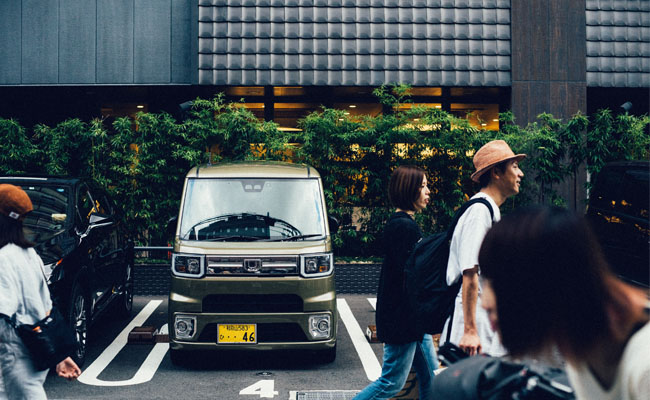Osaka City Guide: Things to Do, Where to Stay, and How to Get Around
Osaka is Japan’s third largest city by population. This attractive, friendly, and energetic metropolis is home to unforgettable landmarks, outstanding cuisine, cultural treasures, and trendy bars and boutiques. With a rich history and modern outlook, its famously fun-loving and outgoing people enjoy a culture of world-class dining and drinking.
Whether you're visiting Osaka for the first time or coming back for a special event or occasion, in this Osaka city guide you will discover a city brimming with possibilities and exciting things to see and do.
Jump Ahead:
- Fun Facts
- Best Time to Visit
- How to Get to Osaka
- Top Osaka Neighborhoods to Visit
- Best Accommodation Options
- How to Deal with Emergencies in Osaka
- Things to Do
- Getting Around
- Food and Drinks
Fun Facts About Osaka
-
Momofuku Ando, the inventor of instant noodles, established his Nissin Foods company in Osaka in 1958.
-
The world's first conveyor belt sushi restaurant opened in Osaka in 1958. The founder got the idea from watching beer bottles on a conveyor belt in a brewery.
-
Universal Studios Japan was the first Universal Studios to open outside of America.
-
Osaka is the 17th-century birthplace of Bunraku, a form of traditional Japanese puppet theater in which half-life-size dolls act out dramatic scenes accompanied by music from a three-string instrument called a shamisen.
-
The world's first capsule hotel was the Capsule Inn Osaka, which opened in 1979.
Best Time to Visit Osaka
Due to its temperate climate, you can visit Osaka any time of the year. But depending on what you’re looking for from your vacation, some months are better than others.
Best Time to Visit Osaka for Snow-Based Adventures
While the winters can be cold (although not excessively so), snow is infrequent and rarely settles. However, you can still enjoy skiing, snowboarding, and other recreational snow activities at ski resorts close to the city.
Mount Rokkō Snow Park in Kobe is 31 miles from Osaka, and Hachi Kita Ski Resort in Kami is approximately 97 miles away. Both are accessible by bus from the city.
Best Time to Visit Osaka for a Natural Wonder
Osaka is one of Japan’s best cities for viewing cherry blossoms. Typically, the soft pink and white blossoms appear during the last week of March and the first week of April. Mankai (full bloom) arrives on April 1.
Among the best places for cherry blossom viewing are Osaka Castle Park, the grounds of the Osaka Mint, and Banpaku Memorial Park in northern Osaka.
Best Time to Visit Osaka to Avoid the Crowds and Save Money
If you don’t like hot and humid weather, it's best to avoid the summer months of June, July, and August when temperatures can top 33°C (91°F). From the beginning of June until about halfway through July, the rainy season visits Osaka and most of Japan.
However, if you can handle the heat, August is a good time to travel because it is not too crowded. September is even better if you’re looking to avoid the crowds and save money. September is the low tourist season, and hotels can be a bargain. January is another quiet and uncrowded month.
Best Time to Visit Osaka for a Party
Osaka, like many cities in Japan, knows how to throw a great party. The city has a breathtaking roster of events and festivals throughout the year. For a loud, lively, and colorful time, plan your visit to coincide with Tenjin Matsuri, the Festival of the Gods, on July 24 and 25.
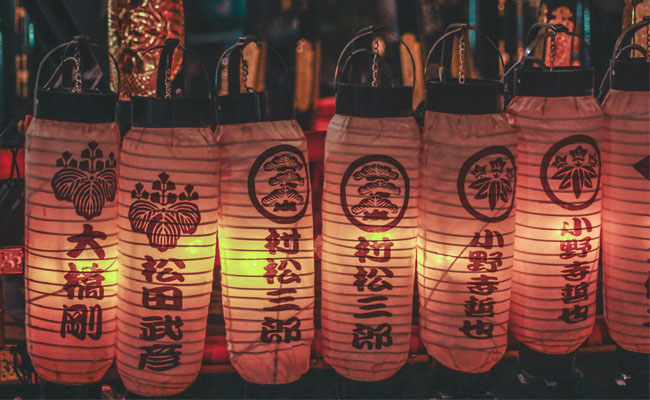
Tenjin Matsuri is one of the largest celebrations in Japan and honors Sugawara Michizane, the deity of scholarship. Expect fireworks, traditional costumes, processions, and bonfires on boats floating along the Okawa River.
Two months later, on September 14 and 15, Osaka hosts one of the biggest and most famous cart-pulling festivals in the country, Kishiwada Danjiri Matsuri. During this high-octane event, neighborhoods vie against each other by pulling large hand-carved wooden Danjiri floats through the streets.
How to Get to Osaka
Kasai International Airport
Most visitors to Osaka arrive by flight into Kasai International Airport (KIX), located on a man-made island approximately 24 miles southwest from the central part of the city.
The airport has two terminals: Terminal 1 handles international and domestic flights by major airlines while Terminal 2 serves low-cost carriers. Terminal 1 houses all the transportation options to the surrounding areas.
Travelers headed to Osaka have several options to get to the city:
JR Haruka Limited Express Train
Also known as the Kansai Airport Express Haruka, the JR Haruka Limited Express Train is a fast, comfortable, and convenient option linking directly with Tennoji Station and Shin-Osaka Station in Osaka and Kyoto Station in Kyoto.
Here are the details:
-
KIX to Tennoji takes 35 minutes and costs ¥3,100 yen for a one-way ticket and ¥4,200 yen roundtrip.
-
KIX to Shin-Osaka takes 50 minutes and costs ¥3,300 yen for a one-way ticket and ¥4,600 yen roundtrip.
-
KIX to Kyoto takes 80 minutes and costs ¥3,600 yen for a one-way ticket and ¥5,200 yen roundtrip.
You can purchase tickets from the JR Office at the airport or from machines near the ticket office. You can also save money by purchasing a prepaid Icoca & Haruka ticket from the JR office.
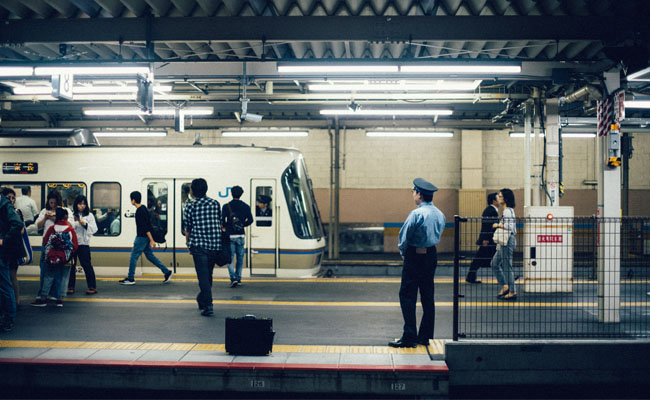
Nankai Rapi:t Airport Express Train
Another fast option, the Nankai Rapi:t Airport Express Train goes directly to Namba Station in the downtown area.
The journey takes about 35 minutes and costs ¥1,430 yen for a one-way ticket. From Namba, you can transfer to trains that go directly to Kobe.
JR Kansai Airport Rapid Service and the Nankai Airport Express
These two services are slower than Rapi:t and the Limited Express Train and cover more stops, but they are also cheaper.
JR Kansai Airport Rapid train service travels to several stations on the Osaka Loop Line, including Tennoji and Osaka.
Among the stations served by the Nankai Airport Express is Namba. This journey takes about 45 minutes and costs approximately ¥900 yen.
Airport Limousine Bus
Airport limousine buses run between the airport and a variety of Osaka locations, including Osaka Station, Namba Station, and Shin-Osaka Station.
You can purchase tickets from vending machines at the airport. Expect to pay ¥1,550 yen for adults and ¥780 yen for children. You can find bus stops outside the Terminal 1 building. Note that the journey time to Shin-Osaka Station is approximately 85 minutes.
Taxi
Taxis are an expensive option. A journey to Namba or Osaka Station will cost around ¥15,000 to ¥20,000 yen and take about 50 minutes depending on traffic.
Rental Car
Several car rental companies have counters at Kansai Airport, including Nippon Rent-A-Car and Toyota Rent-A-Car.
Top Osaka Neighborhoods to Visit
Osaka is divided into 24 wards, each one containing fascinating and distinctive neighborhoods with unique flavors and identities.
Here are some of the key districts well worth putting on your travel itinerary:
Higashi Ōsaka
Higashi Ōsaka is a residential, commercial, and industrial suburb of Osaka known for its rugby heritage. In fact, it was one of the cities that hosted the World Cup of Rugby in the summer of 2019. Several rugby matches were played in the nearby Hanazono Rugby Stadium.
This 24,000-seater sporting arena is referred to locally as “the holy ground of rugby,” and every year the National High School Rugby Championship is held here.
Among Higashi Ōsaka’s other highlights are the Ojoin Rokumanji Temple, the Museum of Commercial History, and the Hyotanyamainari Shrine.
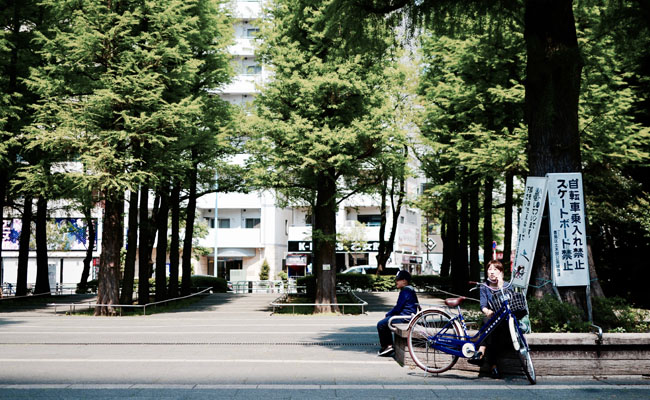
Umeda
Umeda, also referred to as Kita, is one of Osaka's two main downtown hubs. (The other is Minami.) Umeda is where many of the city's train lines meet. The area has many restaurants, department stores, businesses, and bars to keep visitors entertained.
Umeda highlights include the Umeda Sky Building, Nakanoshima-Koen Park, and Tenjimbashi-Suji Shopping Street. At 1.6 miles in length, this street is the longest covered shopping arcade in the city.
Minami
Osaka's second downtown hub comprises the districts of Shinsaibashi and Namba. This pulsating and neon-lit entertainment heart is where the city comes to unwind. It is located around Namba Station and encompasses Dotombori, one of Osaka's most popular tourist destinations.
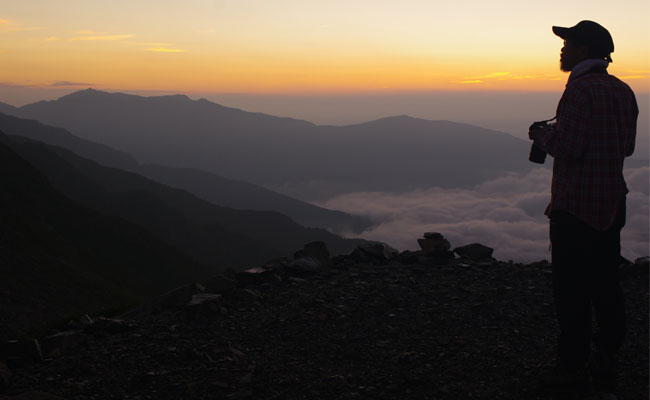
This lively shopping and nightlife neighborhood runs parallel to the Dotombori Canal and is home to many restaurants, cafés, clubs, and shops. Hotspots include Den-Den Town, the electronics shopping district, and Shochikuza, Osaka’s main kabuki theater.
Osaka Castle Area
One of the most famous and attractive parts of Osaka is Osaka Castle and the surrounding Osaka Castle Park. Dotted with cherry trees, gardens, and manicured lawns, this gorgeous green escape is a peaceful refuge from the hectic pace of the city.
Nearby, you will find several restaurants and hotels. In addition to the castle and park, other highlights include the Osaka Museum of History and the ruins of Naniwa-no-Miya, which date back to the sixth and seventh centuries.
Osaka Bay Area
This bayside neighborhood is a place of gorgeous waterfront views and three of the city's most popular attractions. They are Osaka Aquarium, Universal Studios Japan, and the Tempozan Ferris Wheel, which reaches a height of 369 feet.
Another highlight of the Osaka Bay Area is Naniwa Kuishinbo Yokocho, located in the Tempozan shopping mall. The mall hosts local cuisine restaurants serving traditional dishes such as takoyaki, a ball-shaped snack filled with minced or diced octopus among other ingredients.
Places to Avoid in Osaka
Osaka is generally friendly and safe, but like any busy city, some streets are best avoided – principally those in the Kamagasaki neighborhood of Nishinari-ku ward. Although popular with young tourists because of cheap accommodation, it has a large homeless population as well as a high crime rate due to local criminal gangs such as the Yakuza.
Best Accommodation Options in Osaka
The following are a few accommodation options to consider:
Budget Accommodations in Osaka
-
Funkey Share House in Higashi Osaka 3 – An apartment that can accommodate up to two people. Located 2.1 miles from Hanazono Rugby Stadium.
-
U Community Hotel – An establishment featuring European-style air-conditioned guest rooms. Located 2.6 miles from the stadium.
-
Monzen Okagero – A ryokan (traditional Japanese inn) located 3.7 miles from the stadium.
-
Super Hotel Kadoma – A three-star hotel featuring air-conditioned rooms with a private bathroom. Located 5.2 miles from the stadium.
Mid-Range Accommodations in Osaka
-
Hotel Seiryu – Sits at the foot of Mount Ikoma and features a hot spring bath and three restaurants. Located 2.5 miles from the stadium.
-
Sheraton Miyako Hotel Osaka – A four-star hotel with an indoor swimming pool and a restaurant offering sweeping views. Located six miles from the stadium.
-
Hotel Trad – A four-star hotel located six miles from the stadium.
Luxury Accommodations in Osaka
-
Shigisan Kanko Hotel – A ryokan (traditional inn) surrounded by lush green hills featuring Japanese-style rooms and an on-site natural hot spring bath with indoor and outdoor areas. Located 4.9 miles from the rugby stadium.
-
Ryotei Jyusouya – A traditional ryokan with tatami (woven straw) guestroom floors and an on-site restaurant providing Japanese cuisine with seasonal ingredients and Japanese-style breakfasts. Located 10 miles from the stadium.
-
Hotel New Otani Osaka – A luxury hotel located in front of Osaka Castle and featuring 13 restaurants, a fitness club, and an outdoor swimming pool with views of Osaka Castle Park. Located 7 miles from the stadium.
PRO TIP: You may want to consider Higashi Ōsaka as your base for rugby matches played at NOEVIR Stadium in Kobe, which is about 50 minutes away by car.
How to Deal with Emergencies in Osaka
While Osaka is generally a safe city with a low crime rate, the unexpected can still happen. If you fall victim to a crime or need emergency assistance, call the national emergency number for the police: 110. The national emergency number for fire/ambulance is 119.
If you need medical attention while in Higashi Ōsaka, the nearest medical facility is the Higashi Ōsaka City Medical Center (phone: +81 6-6781-5101).
Use the Guide for When You Are Feeling Ill to find other hospitals and medical centers in Osaka. This searchable database is provided by Japan's Tourism Agency.
PRO TIP: Remember to purchase travel medical insurance before you travel to Osaka. While the cost of medical care in Osaka is not particularly high when compared to other countries, bills can add up in the event of a serious accident or illness.
How Much Do Medical Expenses Cost in Japan?
Japan Health Info recommends that travelers without Japanese health insurance take ¥20,000 - ¥50,000 Japanese yen (roughly $181.71 - $454.28 USD) to a medical consultation at a hospital in Japan. That cost can be even higher for medical procedures. For example, the University of Tokyo Hospital lists the cost of medical procedures at ¥500,000 yen, or nearly $4,542.83 USD.
Things to Do in Osaka
Ancient and hidden temples, towering skyscrapers, thrill rides, glitzy shopping malls, and beautiful green spaces provide plenty for you to do in Osaka. You may not get around to all of the fabulous sights the city has to offer, but here are some of the best to put on your to-do list:
Universal Studios Japan
One of the most visited attractions in the country, Universal Studios Japan is a vast theme park with thrill rides and gentler attractions spread across several themed areas. Attractions include The Wizarding World of Harry Potter and Amity Island, which is inspired by the Jaws movies.
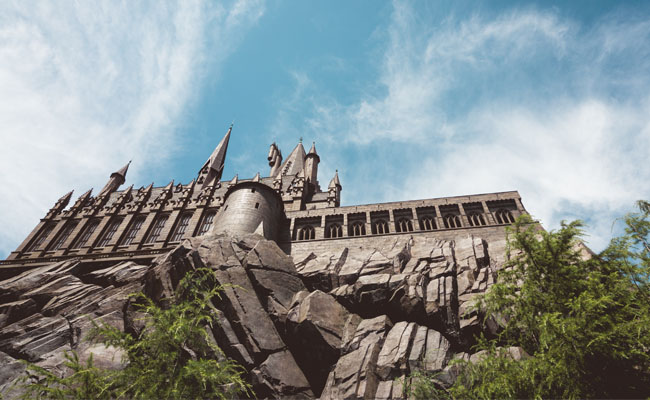
Costs:
-
1-day studio pass for adults (age 12 or over): from ¥7,400 yen
-
1-day studio pass for children (ages 4-11): from ¥5,100 yen
-
2-day studio pass for adults (age 12 or over): from ¥14,700 yen
-
2-day studio pass for children (ages 4-11): from ¥10,000 yen
Getting There: To get to Universal Studios Japan, travel to Universal City Station on the Sakurajima Line (also known as the JR Yumesaki Line).
Osaka Castle
This magnificent stronghold dates back to 1583, although the building we see today is a reconstruction from 1931. Climb up the main tower for superb city views, learn about the Osaka Castle's history in the museum, and wander through the surrounding parkland.
Costs: Access to Osaka Castle and the Osaka Castle Museum is ¥600 yen for adults. Children aged 15 years and younger get in for free.
Getting There: To get to Osaka Castle, you have a couple options:
-
Option 1: Take the subway to Tanimachi 4-chrome or Temmabashi on the Osaka Metro Tanimachi Line
-
Option 2: Take the JR Osaka Loop Line to Morinomiya or Osakajokoen
The walk from either of these stations is about 15 minutes. You can also arrive by bus or by taking the Aqualiner cruise boat to Osakajo Pier or Hachiken-Yahama Pier.
Shitennō-ji Temple Complex
Japan's oldest temple was founded in 593. It was destroyed by fire and has been rebuilt several times over the centuries, with the current buildings dating back to the 1960s and 1970s. Among the highlights is the Treasure House which exhibits Buddhist statues and sacred artifacts.
Costs: There are separate charges for different parts of the complex:
-
Admission to the Inner Precinct: ¥300 yen
-
Admission to the Gokuraku-Jodo Garden: ¥300 yen
-
Admission to the Treasure House: ¥500 yen
Getting There: The temple is a short walk from Shitennoji-mae-Yuhigaoka Station on the Tanimachi Subway Line. Alternatively, you can take the JR Loop Line to JR Tennoji Station and walk about ten minutes from there.
Osaka Science Museum
The Osaka Science Museum features four floors of awe-inspiring interactive exhibits and displays, a planetarium, and live experiments.
Costs: Admission prices to access Exhibition Hall are as follows:
-
Adults: ¥400 yen
-
High school and university students: ¥300 yen
-
Middle school students and younger: free
Admission prices to access Planetarium Hall are as follows:
-
Adults: ¥600 yen
-
High school and university students: ¥450 yen
-
Middle school students and younger: ¥300 yen
Getting There: To get to the Osaka Science Museum, you have a few options:
-
Option 1: Travel to Higobashi Station on the Osaka Metro Yotsubashi Line
-
Option 2: Travel to Atanabebashi Station on the Keihan Nakanoshima Line
-
Option 3: Travel to Nakanoshima Station on the Keihan Nakanoshima Line
The walk from any of these stations is between five and ten minutes.
Hozen-ji Temple
This small temple is set between the bright neon lights of the Dotonbori entertainment district and the shopping malls of Namba. Established in 1637, this temple is home to the moss-covered statue of Fudo Myo-o, a Buddhist spirit. This is the only part of the temple that survived the bombs of World War II.
Costs: Admission is free.
Getting There: The temple is about a 5-minute walk from Namba Subway Station on the Midōsuji Line, the Sennichimae Line, and the Yotsubashi Line.
Kaiyukan Aquarium
Embark on an underwater odyssey at Kaiyukan Aquarium, one of the largest aquariums in the world. More than 15 large tanks hold 30,000 aquatic animals encompassing 620 species. Among them are whale sharks, jellyfish, sea lions, dolphins, and penguins.
Costs: Admission prices to access Kaiyukan Aquarium are as follows:
-
Seniors age 60 and over: ¥2,000 yen
-
Adults age 16 and over: ¥2,300 yen
-
Children ages 7-15: ¥1,200 yen
-
Children ages 4-6: ¥600 yen
-
Children age 3 and younger: Free
PRO TIP: Purchase the Osaka Kaiya Ticket for free admission to the aquarium and unlimited travel on Osaka Metro lines and Osaka City Bus routes. Adults pay ¥2,550 yen and children pay ¥1,300 yen for this ticket.
Getting There: The aquarium is a short walk from Osakako Station on the Chuo subway line. Bus routes 60 and 88 travel to the Tempozan Stop, which is adjacent to the aquarium building.
Minoo National Park
Located in a forest valley just north of Osaka, this natural park is a scenic wonder of great beauty.Hike along walking trails that pass by a waterfall, temples, and other cultural sites. Minoo National Park is one of the best places in Osaka to see the changing colors of fall leaves, especially red and golden maple leaves.
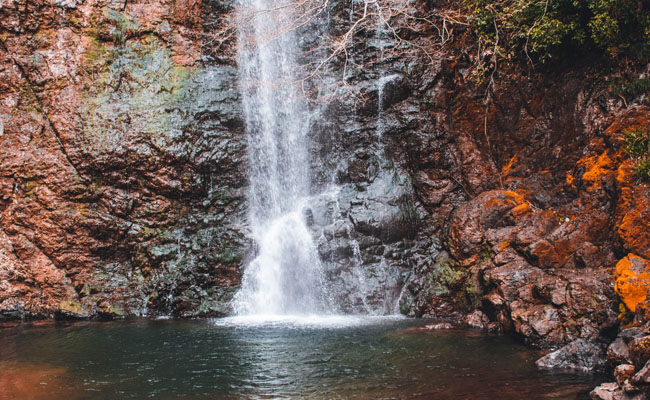
Costs: Admission is free.
Getting There: The park is a short walk north of Hankyu Minoo Station, which is located along the Hankyu Minoh Line.
Umeda Sky Building
Marvel at the mesmerizing bird's-eye view of Osaka from the Floating Garden Observatory on top of this stunning city landmark, which rises approximately 560 feet above the ground.
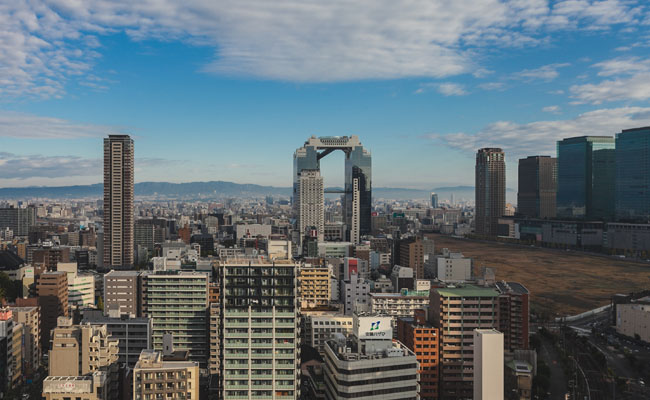
Costs: Admission prices for the Umeda Sky Building are as follows:
-
Adults: ¥1,500 yen
-
Children: ¥700 yen
-
Children age 4 and younger: Free
-
Disabled persons: Half price
Getting There: This landmark structure is about a ten-minute walk from either Osaka Station or Umeda Station.
Spa World
Surrender your body to the soothing waters of this gigantic hot spring theme park. Among the facilities are internationally-themed hot spring baths, saunas, massage services, and swimming pools with water slides.
Costs: There are separate charges for the sauna area, swimming pool area, and the kiddie park. However, the spa often runs lengthy campaigns for months at a time offering all-area admission to both adults and children for just ¥1,000 yen.
Getting There: Spa World is a short walk from either Tennoji Station, Dobutsuen-mae Station, or Shin-Imamiya Station.
Quirky Osaka
While we’ve covered some of the most visited Osaka attractions, there are also plenty of places to see that are slightly off the beaten track – but are no less exciting or fascinating!
They include:
-
The Cup Noodles Museum – Exhibits cover the history of the instant noodles industry, which originated in Osaka. They include a replica of the shed where the first instant noodles were made, and you can create your own unique cup of noodles package. The museum is a five-minute walk from Ikeda station on the Hankyu-Takarazuka line.
-
Reptile Café Rock Star – Enjoy drinks and meals while observing and touching reptiles such as snakes, lizards, geckos, and chameleons. The café is a short walk from Namba Station.
-
The Illusion Museum – Located in the Miraiza Osaka-Jo complex beside Osaka Castle, this museum is filled with tricks and illusions from all over the world.
-
Sayamaike Prefectural Museum – This museum covers the history of Japanese water control systems. You’ll find it in Osakasayama City, a suburb of Osaka, beside an ancient reservoir that’s still in use. Expect a 40-minute train ride from the city center to the museum.
-
Osaka Museum of Housing and Living – Inside this museum are recreations of streets and buildings that show you what Osaka was like in earlier centuries. The museum is located right by Tenjinbashisuji 6-chome Station.
Getting Around Osaka
Osaka is a huge city, but it has very efficient transportation systems. Here’s a bit of insider knowledge to help you navigate them like a pro:
Osaka Trains and Subway
The easiest way to get around the city is to use the Osaka Loop Line and the Osaka Metro. Osaka's extensive metro system encompasses nine lines covering most of the city. Fares vary depending on the distance you are traveling and start at around ¥180 yen for a single journey.
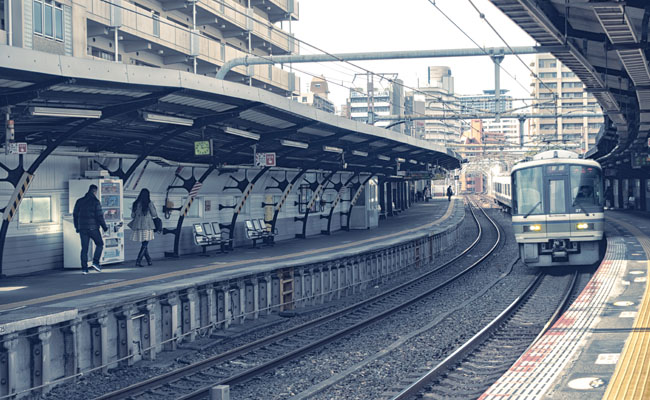
The Osaka Loop Line runs in a loop around central Osaka and covers 19 stations, with 12 of those stations connecting to other railway and metro lines. Fares also vary depending on the distance you travel. Tickets are available from multilingual machines at each station.
PRO TIP: Stations are huge and some lines and systems converge on each other. They can also spill over into shopping malls, so it can be difficult to know where the station begins and a retail center ends. Therefore, don’t expect to arrive at a station and immediately jump on a train. Give yourself plenty of time.
Costs: You can purchase an unlimited 1-day pass for ¥800 yen on weekdays and ¥600 yen on weekends. Find them at the ticket vending machines in any subway station.
Osaka Amazing Pass
There are two versions of the Osaka Amazing Pass:
-
One-day pass: ¥2,500 yen
-
Two-day pass: ¥3,300 yen
Both give you unlimited rides on buses and trains as well as free access to more than 30 attractions. The pass also entitles users to discounts and gifts at participating stores and restaurants.
You can purchase cards from various city locations including tourist information offices and the stationmasters' officers at subway stations.
NOTE: The Osaka Amazing Pass provides unlimited rides for one calendar day. It does not provide 24 hours of unlimited rides from the first time you use the card.
Osaka Buses
The city’s subway system and Loop Line are so extensive and efficient that you may not even need to use buses on your trip. If you do, the average fare on most buses is a flat fee of ¥210 yen for adults and ¥110 yen for children.
You can pay your fare with cash, the Osaka 1-Day Pass, the Osaka 2-Day Pass, or other types of prepaid cards.
While buses are slower than trains, their major advantage is you get to see some of the sights and familiarize yourself with the layout of the city.
Osaka Taxis
Taxis are ubiquitous in Osaka and a convenient way to get around. Fares are metered and cost ¥660 yen for the first 1.2 miles and ¥80 yen for each additional 971 feet.
You can find taxi ranks outside most train stations and bus terminals. You can also hail them in the street.
While some drivers may know a little bit of English, it's always a good idea to have the name and address of your destination written down.
Osaka Vehicle Rentals
Osaka is predominately a flat city that is well-signposted. Consequently, many residents get around by bicycle. There are bike rental services in numerous locations across the city. You can also rent a car from companies such as Nissan Rent-a-car, Budget, and OCAT Car Rental.
Food and Drinks in Osaka
Osaka is known as tenka no daidokoro, or “the nation’s kitchen.” The city earned the nickname during the Edo Period (1603-1868) when it was a trade center for rice.
Today, the moniker refers to its amazing and inexpensive food options, including several famous dishes. These include takoyaki (small balls of batter filled with octopus), kushikatsu (deep-fried skewered meat and vegetables), and horumonyaki (a dish made from beef or pork offal).
The dining options are vast, but here are a few we recommend:
Budget Restaurants in Osaka
-
Street food – Osaka is a foodie's paradise and has some of the best street food in the country. One of the best street food destinations is Dotonbori Street near Namba Station.
-
Yamachan – This Tennoji-area restaurant is a popular place for takoyaki and has even gained mention in the Michelin Guide to Osaka.
Moderately-Priced Restaurants in Osaka
-
Bon – This one-Michelin-star restaurant serves Kushikatsu (deep-fried battered skewers) with a refined touch. It is located in Umeda.
-
Yoshino Sushi – The restaurant has been making Osaka-style sushi for more than 170 years. It is located in the Chūō-ku ward. The nearest station is Yodoyabashi Station.
High-End Restaurants in Osaka
-
Yonemasu – Another one-Michelin-star restaurant, this kappo-style eatery prepares everything fresh in front of you. It offers seasonal ingredients and an ever-changing menu, and reservations are required. It is located in Umeda.
-
Sushidokoro Jinsei –This tiny high-end sushi restaurant has a big reputation. It is located in Minami.
Where to Drink in Osaka
Osakans love to drink, and the city is teeming with great bars, nightclubs, and izakayas (informal Japanese pubs).
Discover a wealth of dining and drinking establishments lining the trendy streets of the Ura-Namba area in the shadow of Nankai Namba Station.
Umeda is another place known for its many bars and izakayas.
Explore More Japan City Guides from WorldTrips
- – Fukuoka City Guide
- – Nagoya City Guide
- – Sapporo City Guide
- – Tokyo City Guide
- – Yokohama City Guide
Explore More Japan Travel Content from WorldTrips
KHE2FFFYH6SP-152-1465
WorldTrips international travel medical insurance products are underwritten by Lloyd's. WorldTrips is a service company and a member of the Tokio Marine HCC group of companies. WorldTrips has authority to enter into contracts of insurance on behalf of the Lloyd's underwriting members of Lloyd's Syndicate 4141, which is managed by HCC Underwriting Agency, Ltd.

